All News






Brought to you by Greenstone Limited

If your hospital is not using a closed-loop medication management system, it soon will be. That's the prediction from the Fourth Annual Summit on Patient Safety & Information Technology held in San Francisco last month. Bar-coding, radio frequency identification (RFID), computerized physician order entry (CPOE), and other elements of a closed-loop medication system are moving at different speeds in similar directions.











Only a handful of the 715 pharmacists on a conference call with CMS officials got to ask questions, but they recited a litany of problems with the implementation of the Part D drug benefit 10 days earlier. Among the snafus most frequently cited were dual eligibles being charged large deductibles and co-pays; hours spent on drug plan help lines; and drug plans denying 30-day transition scripts for drugs requiring prior authorization. When one R.Ph. asked who would reimburse pharmacies for all their lost time spent on Part D, an official said that since pharmacies contract directly with the drug plans, it's not CMS' place to get involved in such issues.

In an era in which large, hospitalwide information systems have become increasingly popular, Pharmacy OneSource (formerly Healthprolink) has taken the opposite tack. The Bellevue, Wash.-based company has seen steady growth of its Quantifi product, a clinical documentation and reporting tool for pharmacies only.

Uncle Sam has come up with a way for pharmacists to fill prescriptions for Medicaid patients who were not automatically enrolled in Medicare Part D and sign them up for a drug plan.

For the first time in more than 10 years, the Food & Drug Administration has granted marketing approval to a drug for kidney cancer. Sorafenib (Nexavar, Bayer/ Onyx) was recently approved for the treatment of advanced renal cell carcinoma, the most common form of the disease. Sorafenib is currently available through specialty pharmacies.

Like a Turkish bazaar, the exhibit floor of the recent ASHP midyear conference, drawing an eye-popping attendance of 20,000 registrants, showcased many new products for health-system pharmacists. Here are some of the new wares displayed at the Las Vegas show

Reducing medical errors during total parenteral nutrition (TPN) processes has been a 25-year challenge for Robert Poole, Pharm.D., director of pharmacy, and his colleagues at Lucile Packard Children's Hospital (LPCH), Stanford University Medical Center.

A two-year effort designed to improve patient safety in Michigan intensive care units has driven down mortality and length of stay by boosting involvement of intensivists in daily rounds, improving reporting, and implementing interventions designed to cut bloodstream infections and ventilator-related pneumonias.

If your hospital is not using a closed-loop medication management system, it soon will be. That's the prediction from the Fourth Annual Summit on Patient Safety & Information Technology held in San Francisco last month. Bar-coding, radio frequency identification (RFID), computerized physician order entry (CPOE), and other elements of a closed-loop medication system are moving at different speeds in similar directions.

An aggressive program of psychotropic drug prescription management saved the Missouri Medicaid program $7.7 million in fiscal 2004. Named Behavioral Pharmacy Management (BPM), the program analyzed drug claims—including inpatient psychotropic prescriptions— to identify inappropriate prescribing patterns.

Some medical errors are so egregious that lawmakers in four states now require hospitals to publicly report how often they occur, and to prove that they have taken corrective action. These "never events" laws adopted in Illinois, Minnesota, New Jersey, and Connecticut are based on criteria developed by the National Quality Forum (NQF).

To catch a thief

A 55-year-old African-American man, T.F., presents to your ER with headache, fever (102?F), muscle aches, and cough; his symptoms have rapidly worsened since onset (24 hours). T.F. received the inactivated influenza immunization 10 days earlier but is diagnosed with influenza A. T.F. had a renal transplant several years ago. His current medicines include tacrolimus (Prograf, Astellas Pharma), prednisone, mycophenolate mofetil (MMF) (CellCept, Roche), and furosemide 40 mg daily. T.F.'s SrCr51.8. The resident is considering antiviral therapy and asks your opinion. What do you suggest?



